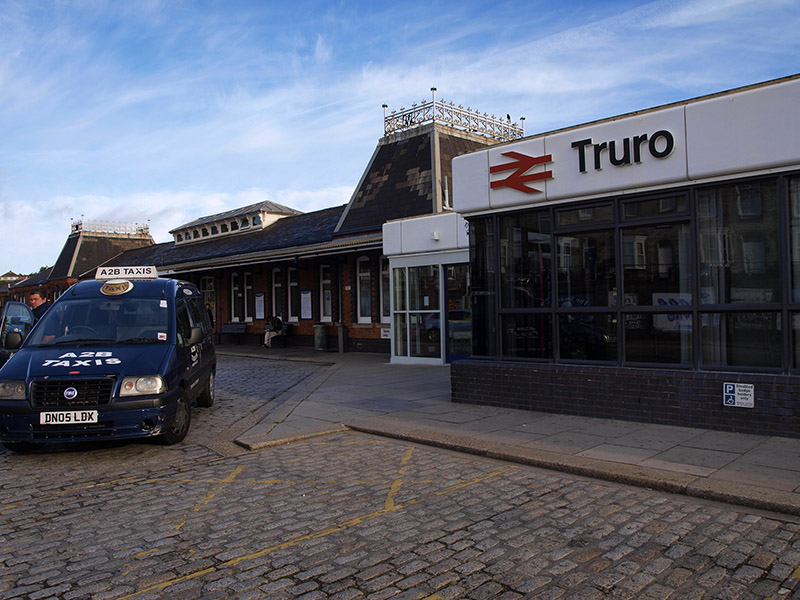The Core Strategy
I abhor the unremitting increase of concrete over the Cornish countryside, but an irrational and emotional response to the planned housing provision in the Core Strategy will fail to influence our policy makers and is out of character with previous CPRE submissions. What is required is a measured, well- reasoned response to the Core Strategy policies, which propose a housing provision for 48,000 dwellings to be built in Cornwall between 2009 – 2030. It must be a response of sufficient weight for councillors and planning officers determining the Core Strategy to agree to amend existing proposals. The first step is to establish a dialogue with planning officers. Antagonising them and the housing portfolio holder will be totally counterproductive.
Our environment, educational facilities and low criminality attracts incomers, who wish to share our assets and no amount of planning can stop them. They come here for economic and lifestyle reasons and for retirement in that order. Whether we like it or not they will want houses and they have plenty of money to buy them. If there is an inadequate supply of houses, house prices will rise and increase the affordability gap between local people and more affluent incomers and potential employees unable to find affordable housing for their families will leave the County resulting in skill shortages.
Planners will be the first to admit that predicting migration is extremely difficult, but statistics clearly show that it is highly dependent on national economic wellbeing. When we are struggling in a recession in-migration is low, when the economy is buoyant it is high with a variation between 4000 and 6000 pa. and remember that an unquantified number of families are returning to live in Cornwall. The County Council has opted for a medium level of growth which requires the building of 48000 houses over 20 years and this figure is open ended. A low level of growth such as at present requires 38000 houses to be built over this same time period. It would be perfectly appropriate to campaign for a low level of growth, which might be more realistic and acceptable and in accord with the present Structure Plan for 40,000 houses over the period 1996 – 2016.
Another factor is the steady decrease in household size owing to people living longer and frequently the sole occupant, the break up of families and young people wishing to set up home on their own. This affects existing Cornish families and accounts for a significant number of people requiring housing.
An on-going problem with no solution in sight is the supply of affordable housing for the 20,000 households in Cornwall in some kind of housing need. Presently the principal means of building affordable housing is a cross subsidy from developers building market housing. This means that developers are asked to contribute 30% of all new housing at affordable prices. In fact only 25% of all new housing is classed as affordable. This is an area where County planners should be challenged to require 50% of all new housing to be affordable, which has been a guide figure for exception sites outside villages. The definition of affordable rental or purchase prices and terms needs to be clearly determined, so that only local people are allowed to benefit.
Very recently the government has floated a policy allowing council housing in desirable, high cost villages to be sold and the funds then be used to build more council houses in cheaper areas. This needs to be resisted or otherwise many of our villages will become the sole preserve of second home owners and wealthy incomers and seems to fly in the face of much vaunted government policy of social cohesion. As it is, 11% of our housing stock are classed as second homes and are recorded as paying a proportion of the Council tax. It should be 100%. There is also the problem of empty homes of which there are 1.7% across the County.
On the brighter side our successful colleges of Higher education and the university of Tremough have succeeded in our aim to retain more of our young people in the County. Now a major effort is required to attract more businesses into the County to employ them and stem the outflow yet further, but again the availability of cheap housing becomes an important factor.
An area of particular concern to the CPRE is the location of new housing so as to preserve as much of our countryside as possible from building. Reluctantly we have to accept that there is a shortage of brownfield sites in the County so housing, commercial and industrial development will intrude on to our countryside. Our objective should be to reduce this intrusion as much as possible and that designated areas such as AONB’s and AGLV’s should have absolutely minimal new builds. Here again the status of AGLV’s has been allowed to relapse and it needs strengthening. According to the Localism Act the much hyped up word “sustainability” applies to the environment of all new development , which is now routinely ignored. As it is, in the Truro area the Strategic Planning Committee are granting planning applications heavily influenced by sweeteners offered by developers and pre-empting the Neighbourhood Plan. Eg: A Park and Ride site for free at eastern Truro, a free site for a Stadium at Langarth, a new junction at Arch Hill all in return for permissions to build and no doubt there are many more examples elsewhere.
This a much simplified and potted version of our housing and economic growth problems.
Peter Burton






Hi DavidI’ve added to the original post with my take on the core statregy.As far as growth in Launceston is concerned, the surveys carried out by the Forum have shown a strong need for more affordable housing. I also want to see some balance in any new housing to get ‘the bosses’ too.Launceston has been incredibly badly served by recent development which plonked houses down without the infrastructure to cope. Working with colleagues, we are now making sure that any new proposals have the infrastructure to cope and make up for some of the past shortfall. Regretttably, there is no other way to make up ground.Crucially, what we have lacked in the past is significant concentration on employment growth and so we are seeking to ensure that land is ‘reserved’ for development that brings jobs, not houses.What we have done so far is only the start. The crucial next stage will be the public consultation.